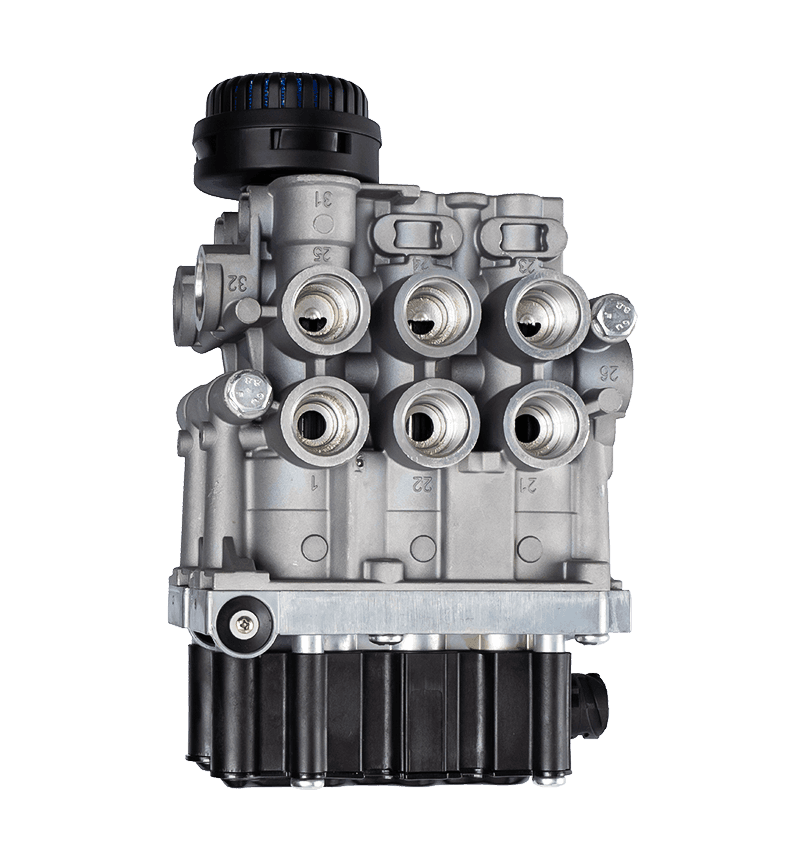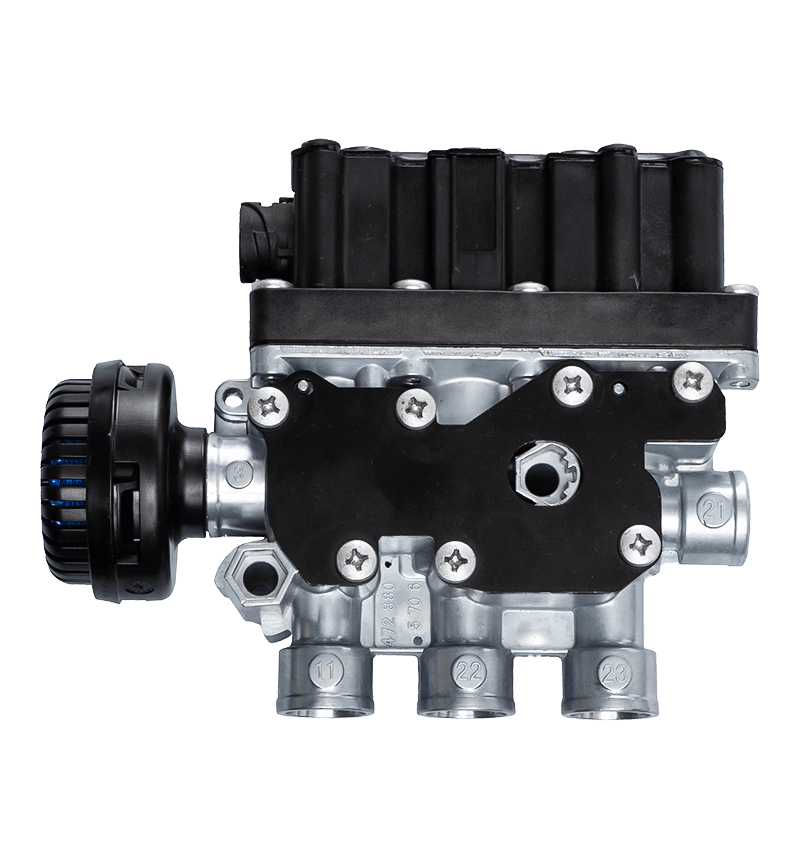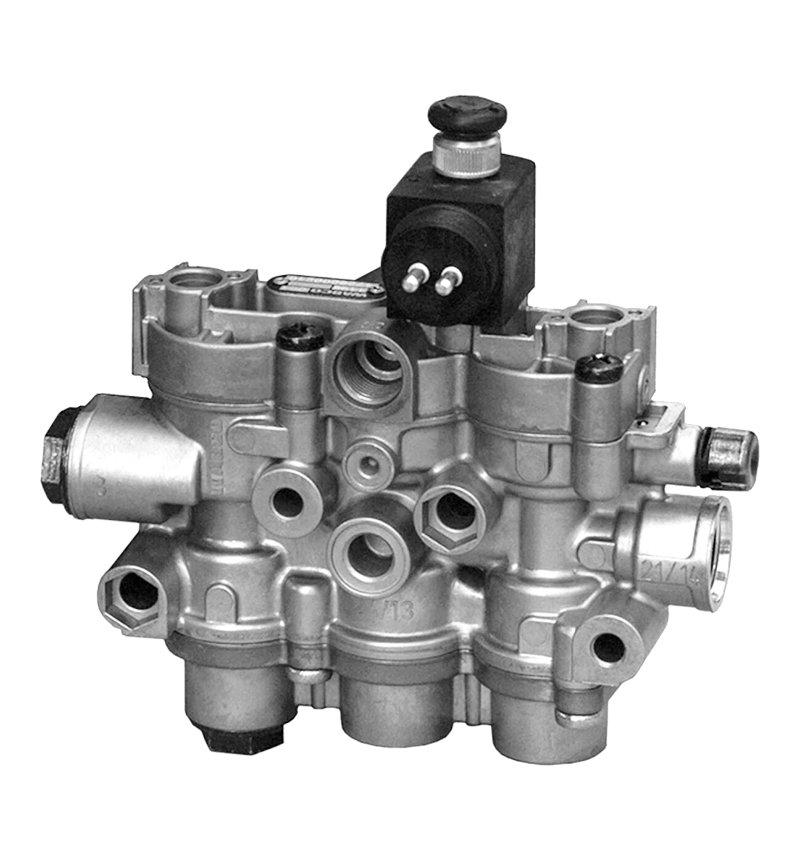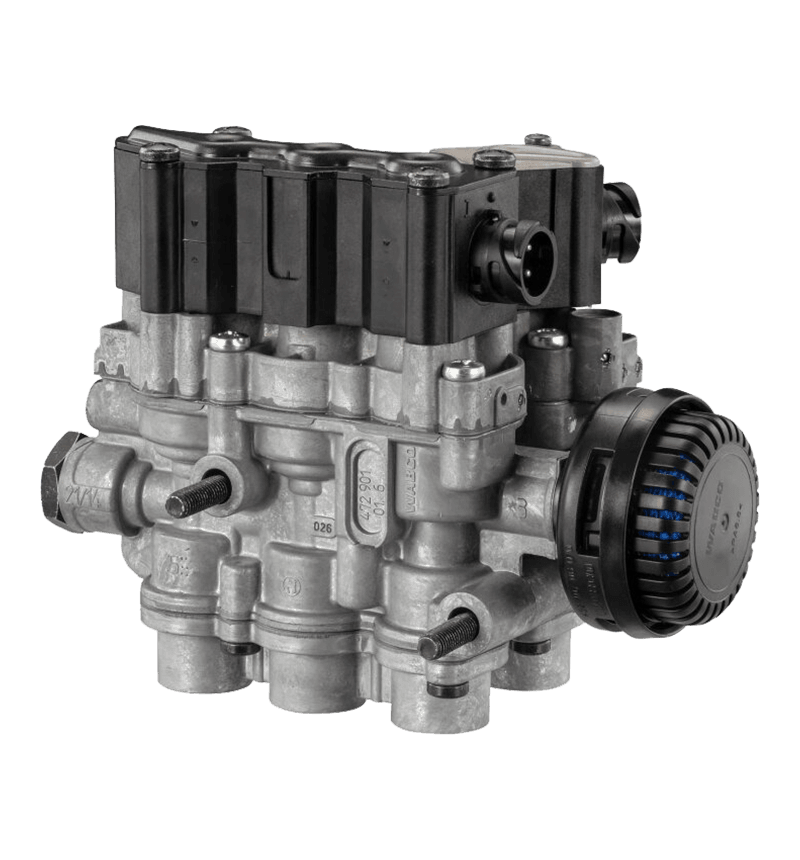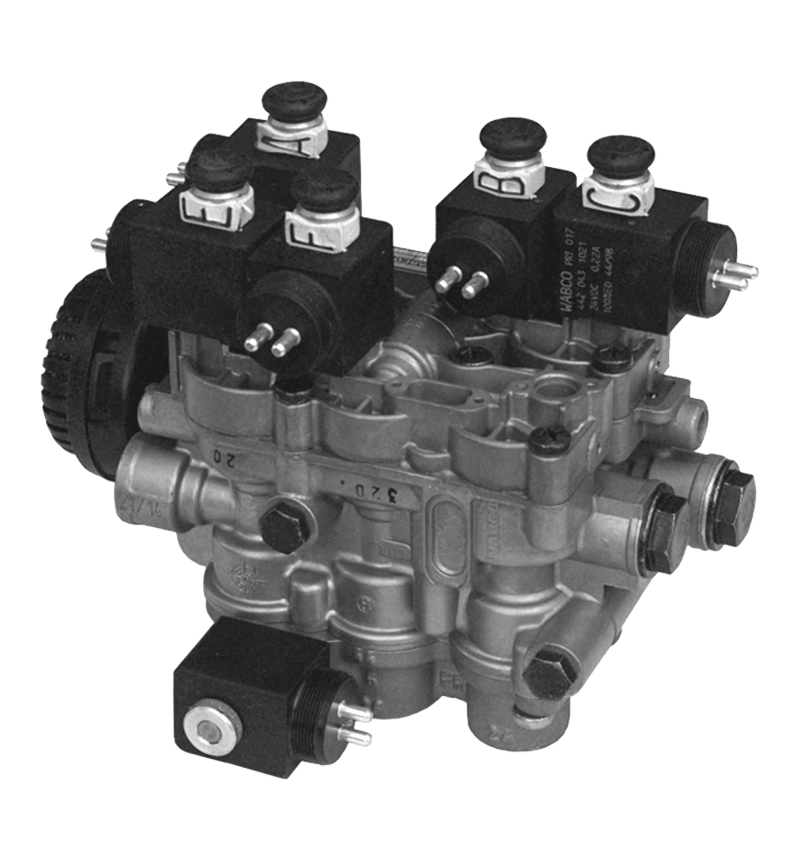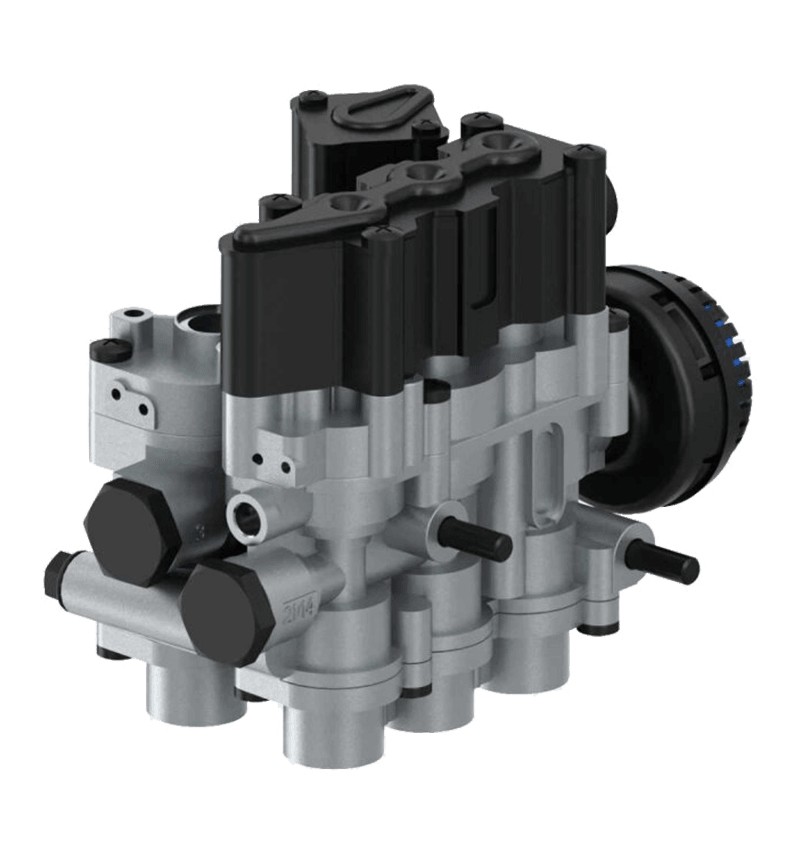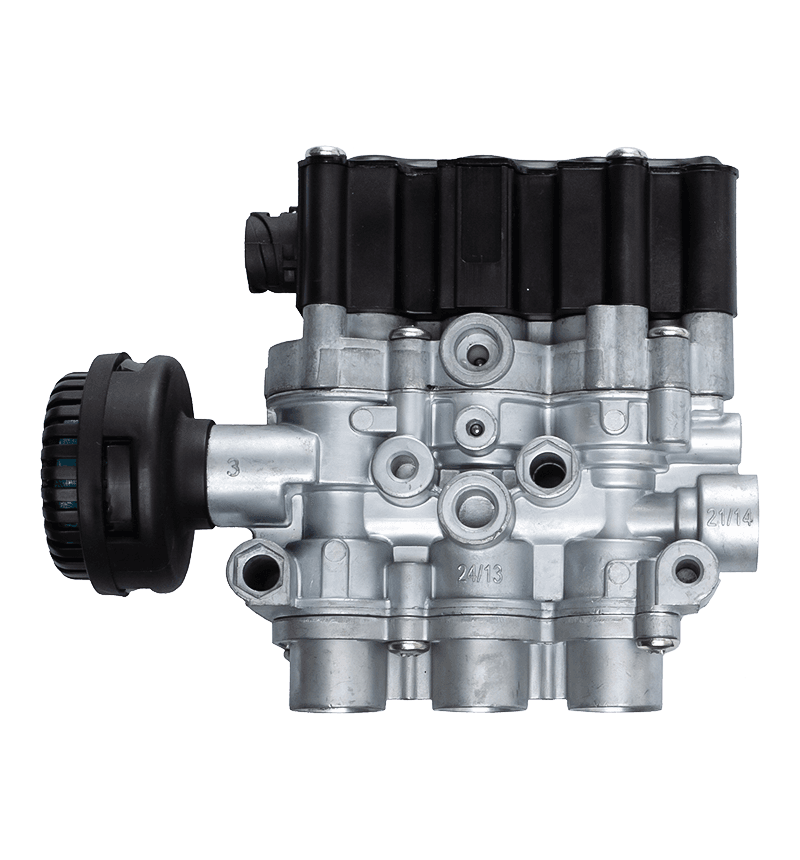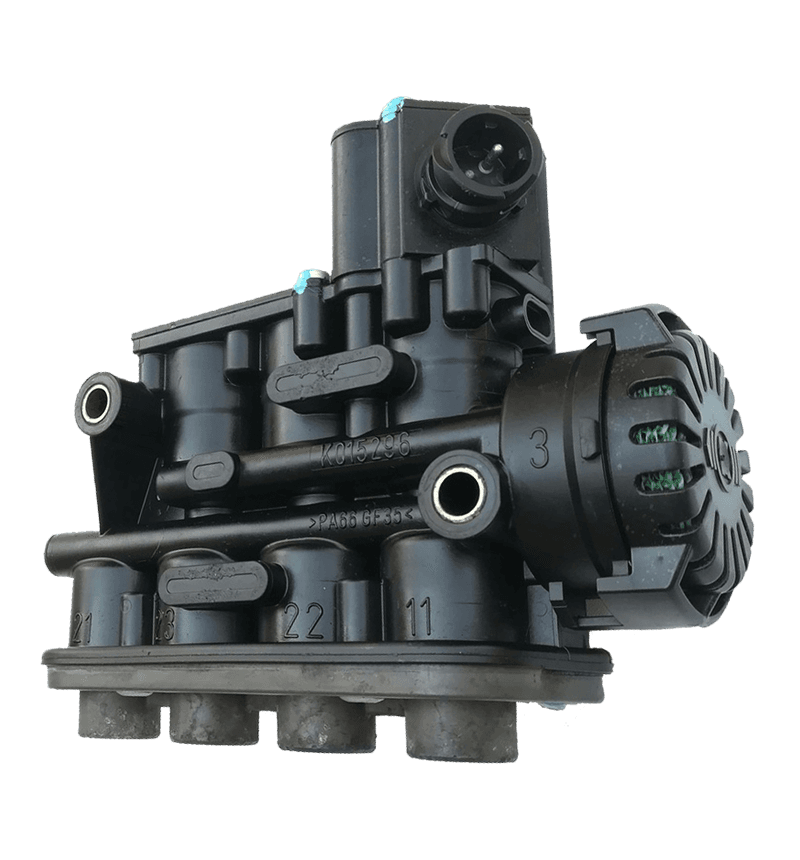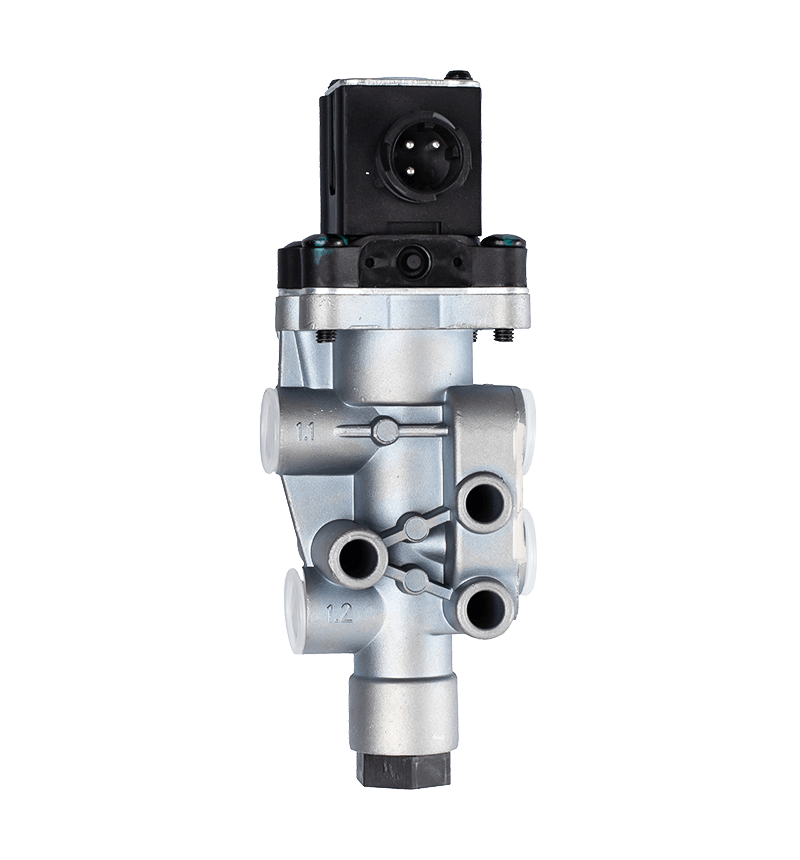Basic definition and system background of ECAS valve
ECAS valve, full name Electronic Controlled Air Suspension Valve, is a key component in the electronic control air suspension system. The air suspension system automatically adjusts the vehicle height and body posture by adjusting the inflation and deflation of the airbag. ECAS valve is one of the core components to complete the gas circulation and regulation. It plays an important role in connecting the gas source, controlling the air pressure, and transmitting signals in the whole system. It usually works with height sensors, air compressors, electronic control units and other components to maintain the stability and comfort of the vehicle body.
Control air flow to achieve suspension height adjustment
The main function of the ECAS valve is to control the flow path of gas in the system, thereby adjusting the internal air pressure of the air spring. When the vehicle needs to be raised or lowered, the ECAS valve opens or closes the corresponding channel according to the instructions sent by the electronic control unit, so that the gas flows to the air spring or is released from it. This process directly determines the working state of the suspension system. Especially when the heavy load or light load state changes, the ECAS valve can adjust the air pressure in time to restore the vehicle body to the preset height, improving the adaptability of the vehicle under various use conditions.
Realize automatic and manual control switching of vehicle height
Hyundai ECAS system supports a combination of automatic adjustment and manual intervention. The ECAS valve receives data from the vehicle height sensor and automatically adjusts the suspension system to keep the vehicle body at the target height. When the driver needs to adjust the vehicle body height to cope with specific road conditions (such as loading and unloading platforms or passing ramps), he can also issue instructions through the control panel, and the ECAS valve will perform the operation to achieve manual control. This flexible control capability has practical value in improving vehicle traffic performance and operational convenience.
Coordinate multi-airbag partition control to improve balance and safety
In multi-axle vehicles, there may be multiple air spring units on the front and rear axles or on the left and right sides. The ECAS valve can independently control the gas flow of each airbag and adjust the partition according to the load changes in each area. This can effectively prevent the vehicle body from tilting due to uneven load and improve overall stability. When making emergency turns, climbing slopes or passing through uneven roads, the partition control function can reduce vehicle roll, improve the balance of the driving process, and play an auxiliary role in ensuring vehicle control safety.
Participate in posture adjustment when starting and stopping the vehicle
ECAS valves are also widely used in posture management during vehicle starting and stopping. For example, on passenger vehicles or special transport vehicles, the system can automatically lower the height of the vehicle body when the vehicle stops, making it easier for passengers to get on and off or load and unload goods; after starting, the ECAS valve controls the gas to quickly fill the airbag to restore the body to the driving state. This automatic adjustment function not only optimizes the vehicle operation process, but also improves the human-computer interaction experience.
Linking with other systems to improve overall response efficiency
Modern vehicles are generally equipped with a variety of electronic control systems, such as braking control systems (ABS), stability control systems (ESP) and powertrain systems. ECAS valves can share data with these systems through control units to achieve multi-system linkage. For example, when the vehicle brakes, the ECAS system can quickly adjust the suspension hardness or height to cooperate with the braking system to reduce inertial impact. In specific driving modes (such as off-road, snow or ramp modes), the valve responds to system instructions to adjust the suspension state in time to meet different driving needs.
Assist in improving ride comfort and in-vehicle stability
The real-time control and dynamic adjustment capabilities of the body height are important means to improve the riding experience. The ECAS valve continuously monitors and adjusts the airbag pressure to keep the vehicle body in a relatively stable posture during driving, which helps to reduce vibration and shaking, especially for long-distance transport vehicles and passenger vehicles. When the vehicle is driving on bumpy or uneven roads, the suspension system can respond to feedback in time through the ECAS valve, reduce the displacement of items in the vehicle, and improve the driving experience.
Reduce chassis wear and component impact
When the vehicle frequently drives on complex roads or the load fluctuates greatly, the traditional fixed suspension system is prone to stress concentration on the chassis components. The ECAS valve adjusts the air spring pressure according to real-time control instructions, which can effectively buffer the impact of the ground and avoid excessive pressure on the chassis, thereby reducing the wear of components to a certain extent. In the long run, this effect helps to extend the service life of the vehicle chassis system and reduce the frequency of maintenance.
Support vehicle remote diagnosis and early warning function
The new generation of ECAS valves has multiple integrated electronic communication interfaces, which can be connected to the vehicle information system to realize remote data transmission and system diagnosis. When the system is abnormal, such as pipeline leakage, valve jamming, air pressure fluctuations, etc., the ECAS valve can cooperate with the control unit to send an alarm signal to prompt the user to check or repair. This function can reduce the impact of sudden failures on driving safety and enhance the reliability of system operation.


 English
English Español
Español


